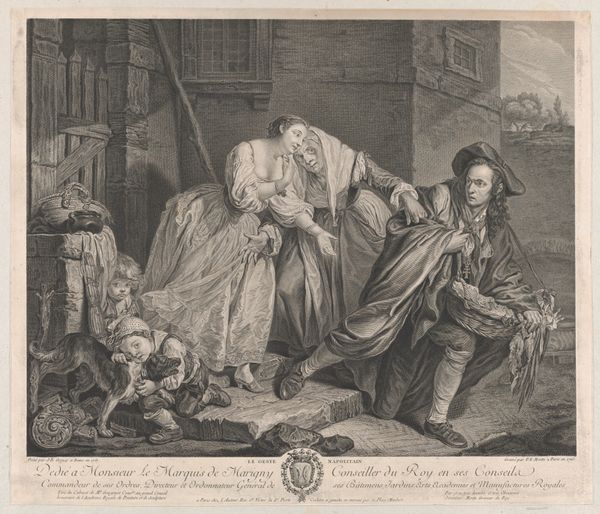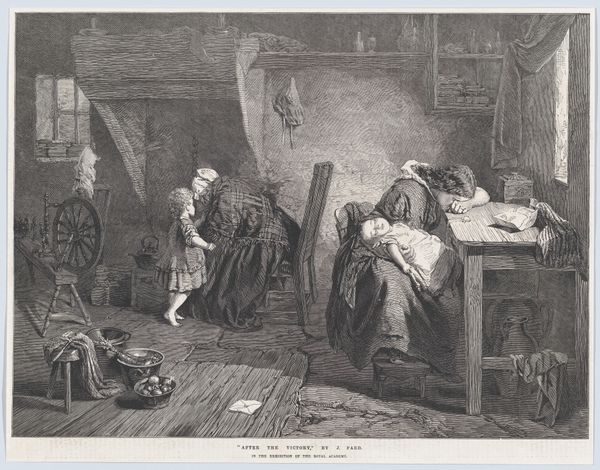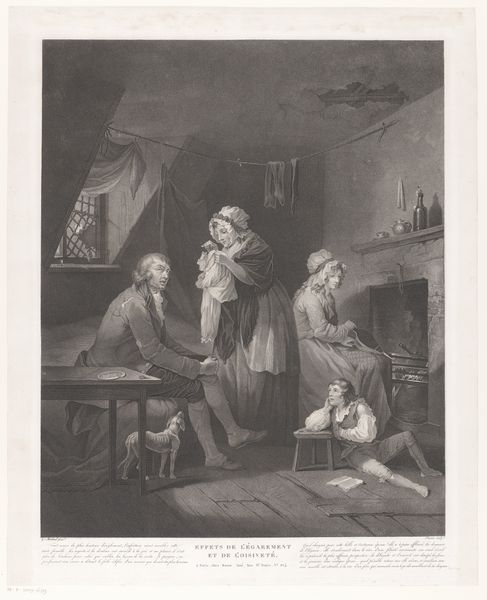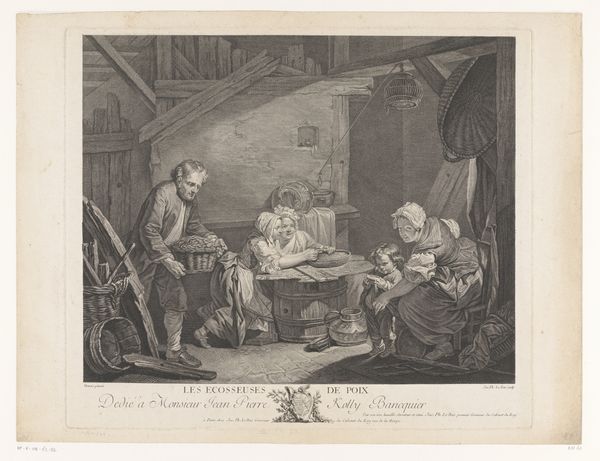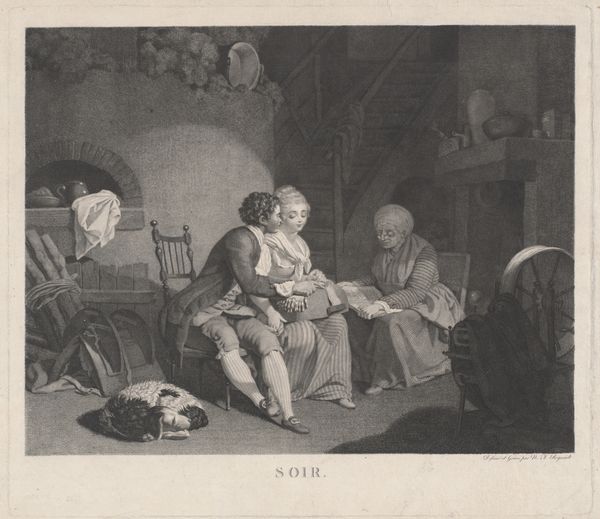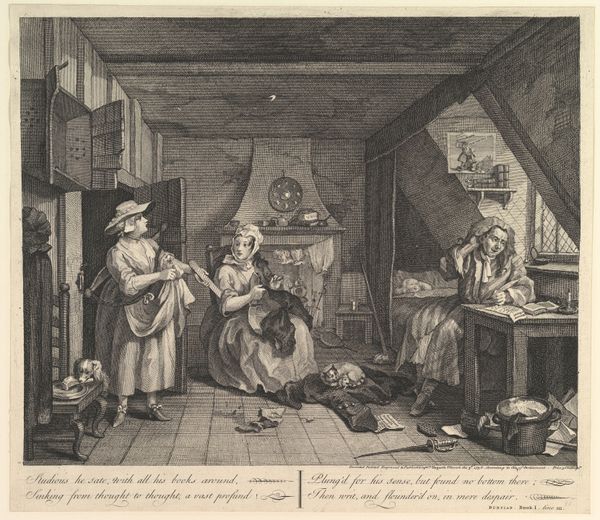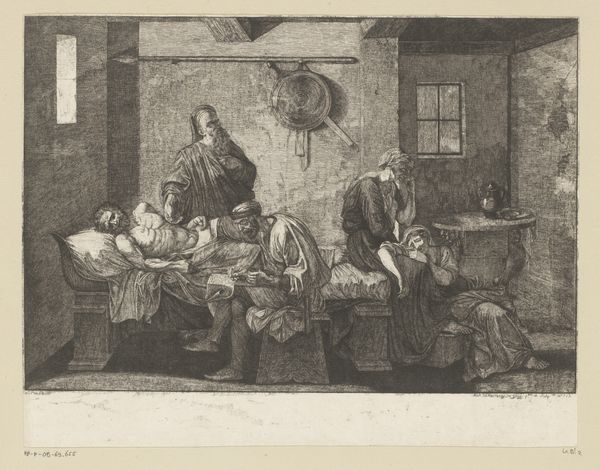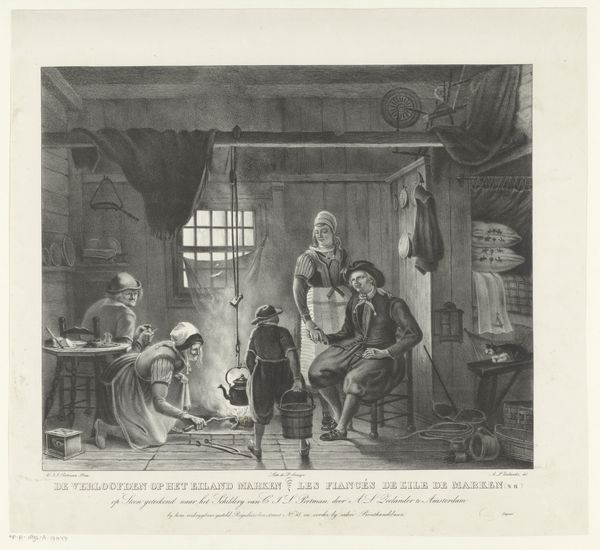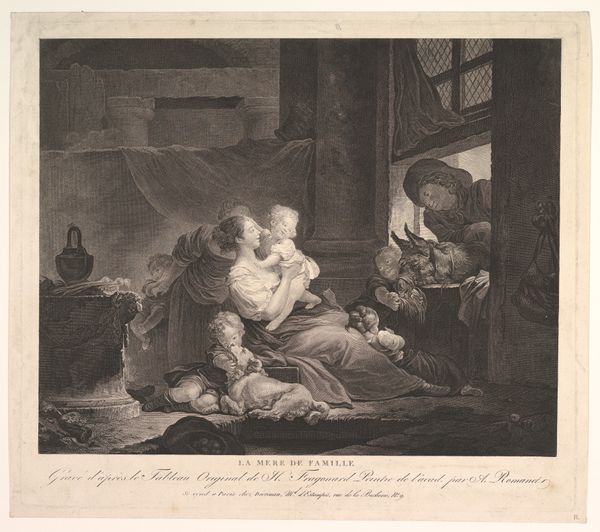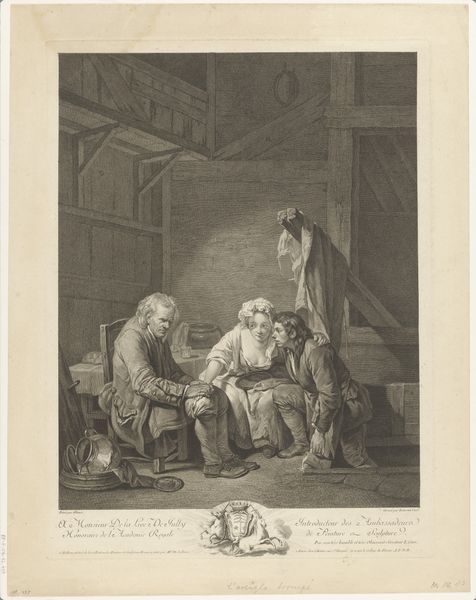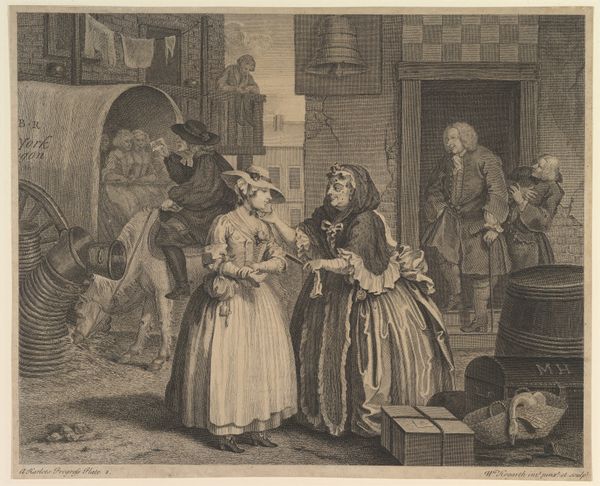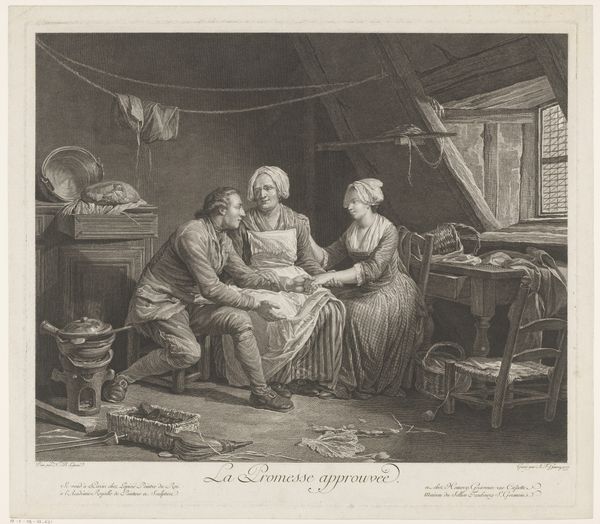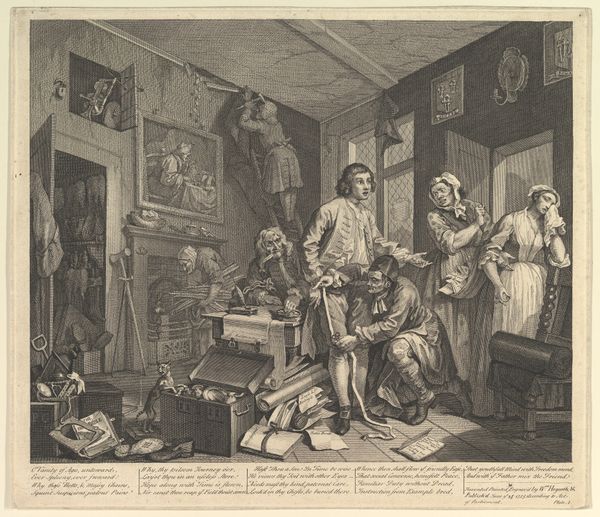
Dimensions: height 416 mm, width 488 mm
Copyright: Rijks Museum: Open Domain
Curator: Pierre Etienne Moitte created this engraving, "Young Woman Beside a Basket of Broken Eggs," in 1769. The lines are so crisp. It almost feels contemporary, but something tells me it's deeply rooted in the social realities of the era. Editor: My immediate impression is of melancholy and the fleeting nature of youthful hope. The central female figure droops with a quiet, interior sorrow, and all those broken eggs…it’s rather powerful imagery. Curator: Exactly. These broken eggs wouldn't simply signify a bit of lost food. It symbolizes shattered dreams, specifically expectations of a young woman’s role and potential upward mobility through alliances or courtship. The presence of other figures implies social judgment, hinting at complex power dynamics within a community of the time. Editor: I agree. Consider the basket itself. It could be an allusion to a womb and the failure of its promise. Eggs throughout art have symbolized potential life and the start of something, and in this case, the image reveals this potential cruelly destroyed, a stark portrayal of loss. Curator: Absolutely. Also, by producing the piece as a print intended for wide distribution, Moitte engaged in the emerging culture of sentimentality. He allowed those less wealthy to contemplate difficult issues or at least cultivate empathy among varied audiences. What might our 21st-century museum audience see in all of this, do you suppose? Editor: Hopefully a moment to ponder universal experiences of loss and expectation but through the fascinating, specific lens of 18th-century social realities. I imagine, even with the piece's fine details and historical trappings, viewers might empathize with that same kind of heavy, internal sorrow, and that feeling remains so immediate. Curator: A crucial role of artwork, surely, is making viewers ponder history while confronting timeless human drama and doing so across time itself. This piece encapsulates precisely that.
Comments
No comments
Be the first to comment and join the conversation on the ultimate creative platform.
